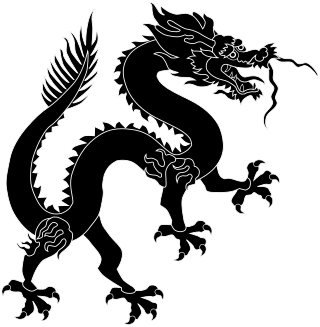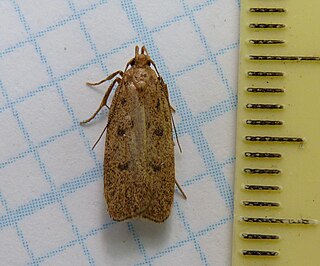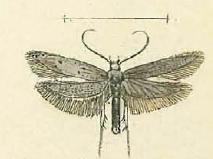
A language family is a group of languages related through descent from a common ancestral language or parental language, called the proto-language of that family. The term "family" reflects the tree model of language origination in historical linguistics, which makes use of a metaphor comparing languages to people in a biological family tree, or in a subsequent modification, to species in a phylogenetic tree of evolutionary taxonomy. Linguists therefore describe the daughter languages within a language family as being genetically related. The divergence of a proto-language into daughter languages typically occurs through geographical separation, with different regional dialects of the proto-language spoken by different speech communities undergoing different language changes and thus becoming distinct languages from each other.

The Dragon, also known as Loong, is the fifth of the 12-year cycle of animals which appear in the Chinese zodiac related to the Chinese calendar. The Year of the Dragon is associated with the Earthly Branch symbol 辰, pronounced chen.

Aquarius (♒︎) is the eleventh astrological sign in the zodiac, originating from the constellation Aquarius. Under the tropical zodiac, the Sun is in the Aquarius sign between about January 20 and February 18. Aquarius is one of the three air signs, alongside Gemini and Libra. The ruling planets of Aquarius are Saturn, and Uranus. The opposite sign of Aquarius is Leo.
J, or j, is the tenth letter in the Latin alphabet, used in the modern English alphabet, the alphabets of other western European languages and others worldwide. Its usual name in English is jay, with a now-uncommon variant jy. When used in the International Phonetic Alphabet for the voiced palatal approximant it may be called yod or jod.

The Symmocinae are a subfamily of moths in the superfamily Gelechioidea. These small moths are found mainly in the Palearctic and Africa.

Dysspastus undecimpunctella is a moth of the family Autostichidae. It is found in Croatia, Albania, North Macedonia, Greece and Turkey.
Dysspastus baldizzonei is a moth of the family Autostichidae. It is found on Crete.
Dysspastus fallax is a moth of the family Autostichidae. It is found on the Iberian Peninsula and in France.
Dysspastus hartigi is a moth of the family Autostichidae. It is found in Italy.
Dysspastus ios is a moth of the family Autostichidae. It is found on the Cyclades, an island group in the Aegean Sea.
Dysspastus lilliput is a moth of the family Autostichidae. It is found on Malta in the Mediterranean Sea.
Dysspastus mediterraneus is a moth of the family Autostichidae and subfamily Symmocinae. It is found on Sicily.

Dysspastus musculina is a moth of the family Autostichidae. It is found in Greece.
Dysspastus perpygmaeella is a moth of the family Autostichidae. It is found on Corsica and Sardinia.

Dysspastus is a Palearctic moth genus in the family Autostichidae.
Dysspastus cinerascens is a moth in the family Autostichidae. It was described by László Anthony Gozmány in 1969. It is found in Asia Minor.
Dysspastus djinn is a moth in the family Autostichidae. It was described by László Anthony Gozmány in 1963. It is found in Lebanon.
Dysspastus erroris is a moth in the family Autostichidae. It was described by László Anthony Gozmány in 1962. It is found in Algeria.
Dysspastus hebraicus is a moth in the family Autostichidae. It was described by László Anthony Gozmány in 2008. It is found in Israel.
Dysspastus mucronatus is a moth in the family Autostichidae. It was described by László Anthony Gozmány in 2008. It is found in Iran.




